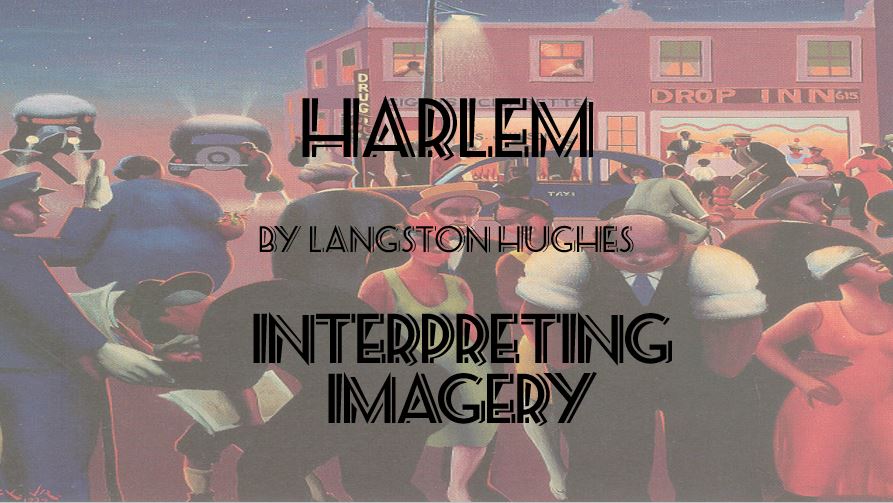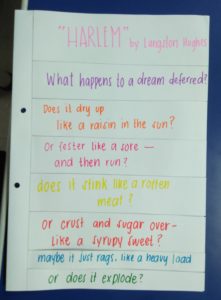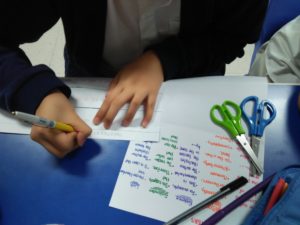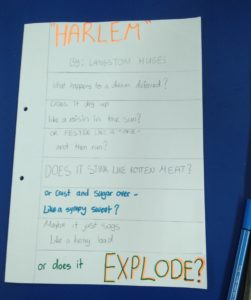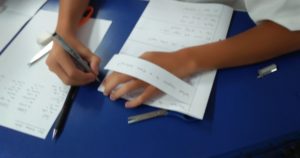My students of all ages have a difficult time incorporating textual evidence into their writing. Once we get past the punctuation hurdles, not to mention choosing evidence that actually works as such towards their claims, I have had real trouble getting them to make the step from paraphrasing to gritty analysis and interpretation.
For example, I get a lot of:
The author states, “The sun beat down like a heavy burden on her shoulders.” This shows that the sun was hot.
Or if we’re lucky:
The author states, “The sun beat down like a heavy burden on her shoulders.” This use of personification shows that the sun was hot.
I realized many of them didn’t even understand that difference between paraphrasing and interpretation. Determined to get my students to think a little deeper, I have them work in pairs to paraphrase the literal meaning of the imagery in Langston Hughes’s poem Harlem. I then model for them the what analysis and interpretation looks like in comparison. Because the learning objectives are specifically set around textual evidence, I only give a few points of historical context.
 Loading...
Loading...
We take the notes into a foldable that separates the poem’s pieces of imagery so the students can focus on them one at a time. They think-pair-share to paraphrase each piece of imagery and then compare it to the rest of the class’s efforts and then to the PowerPoint. With a more able group of students, they could try to interpret each piece of imagery before comparing it to the PowerPoint. With a less experienced group of literary analysts, we will take the notes directly into our foldables while discussing each one.
 Loading...
Loading...
Students next use the P.E.E.L. format to answer the directed writing question, incorporating textual evidence and interpreting that textual evidence to go beyond literal restatements of quotes. It’s not an immediate fix, but the students keep their foldable in their binders for reference, and the depth of their analysis is making quicker improvements.
[insert_php]
// INSTRUCTIONS: array(“url”,”title”,”type”,”size”),
// AND only the last array() line does NOT have a comma at the end
$downloads = array(
array(“https://www.theteacherslibrary.com/wp-content/uploads/2017/03/lh-harlem-textual-evidence.pptx”,”Download Harlem textual evidence”,”pptx”,”925kb”),
array(“https://www.theteacherslibrary.com/wp-content/uploads/2017/03/harlem-foldable.pub”,”Download Harlem imagery foldable graphic organizer as Publisher doc”,”pub”,”115kb”),
array(“https://www.theteacherslibrary.com/wp-content/uploads/2017/03/harlem-foldable.pdf”,”Download Harlem foldable graphic organizer as PDF”,”pdf”,”165kb”)
);
insertDownloads($downloads);
[/insert_php]

